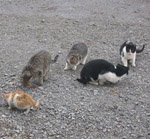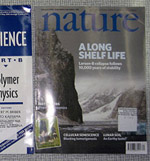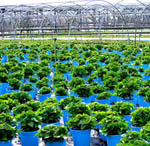Evaluating protected areas in China and North Korea
 Forest,
Forest,  Protected Areas,
Protected Areas,  Technology-GIS
Technology-GIS  Heaven Lake, a crater lake atop Baekdu Mountain. Image credit, Bdpmax.A new case study on forest conservation in China and North Korea illustrates the extreme challenges that protected areas face in many countries. The study also provides interesting insight into the fate of conservation efforts in a part of the world that receives very little coverage from Western media.
Heaven Lake, a crater lake atop Baekdu Mountain. Image credit, Bdpmax.A new case study on forest conservation in China and North Korea illustrates the extreme challenges that protected areas face in many countries. The study also provides interesting insight into the fate of conservation efforts in a part of the world that receives very little coverage from Western media.
The Baekdu Mountain area along the Chinese-North Korean border forms a 328,456-hectare biosphere reserve spanning protected areas in both countries. Containing extensive, contiguous primary forest and the highest plant biodiversity in the cool temperate zone, the area provides important habitat for numerous species of wildlife such as the endangered snow leopard.
Lina Tang and fellow researchers used satellite images from 1985, 1993, 1999, and 2007 to assess the extent of primary forest loss in the protected areas of both countries over that time period. They also looked at Google Earth imagery and conducted field visits to provide additional data.
According to their findings, the North Korean side of the biosphere reserve is faring especially poorly. They found that the North Korea side underwent extensive loss of primary forest - between 50-75% had been logged by 2007. Meanwhile, the extent of primary forest held steady in the protected area in China where strict rules prohibit logging.
However, the forested area in China underwent serious degradation from over-harvesting of pine seeds, which have become highly desirable in food markets. The authors write, "Nearly all pine seeds were removed from the forests, and every mature pine tree trunk was wounded by climbing spurs and lost twigs/branches." However in 2007 the Chinese government prohibited pine seed collection, so it seems like the situation should improve.
Interestingly, the forest impacts in both countries were largely not visible looking just at the satellite imagery. Most of the logging on North Korean side occurred in thin strips with a width of around 10 meters - much narrower than the 30-meter pixel size of the satellite data.
These results show that just looking at satellite imagery alone may miss out on serious negative impacts within protected areas. For example, the satellite imagery shows that 69% of the primary forest on the North Korean side is still remaining while the true number is much lower.
In North Korea, the deforestation is likely driven by the dire economic situation in the country and the clearing of land for agriculture. While there are no residents living on the Chinese side of the reserve, there are tens of thousands of people living within the North Korean protected area.
Meanwhile, outside the Chinese protected area, extensive logging on state lands has converted primary pine forest to secondary birch-aspen, which is biologically less complex. Reflecting on the overall state of the biosphere reserve, the authors write,
"Both reserves have become highly isolated and their truly protected areas have become rather small. The increasing rate of exploitive uses of forest resources around and within these reserves poses an alarming threat to sustainable biodiversity conservation in these protected areas and [the] East Eurasian Continent."
--Reviewed by Rob Goldstein
Tang, L., Shao, G., Piao, Z., Dai, L., Jenkins, M., Wang, S., Wu, G., Wu, J., & Zhao, J. (2010). Forest degradation deepens around and within protected areas in East Asia Biological Conservation DOI: 10.1016/j.biocon.2010.01.024




Reader Comments